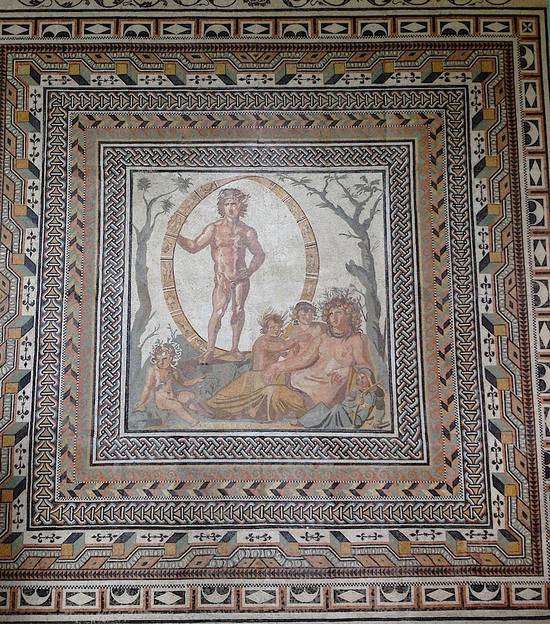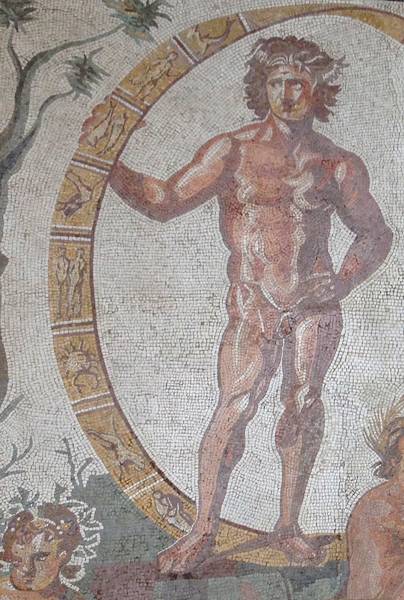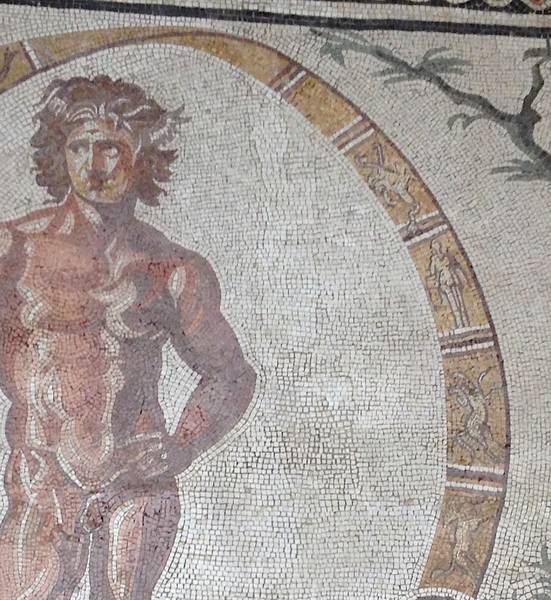“The name Sassoferrato derives from the Latin saxum ferratum, ‘stone encircled by iron’; it stands on a rocky crest, in an area rich in iron ore. Close by, at the confluence of the Sentino and Marena rivers, stood the Roman city of Sentinum, where in 295 BC the Romans achieved a momentous victory at the Battle of Sentinum, or Battle of the Nations, over the Gauls, Etruscans and Samnites; later (in 41 BC) it was destroyed on behalf of Octavian by Salvidienus Rufus and, when Octavian became Caesar Augustus, rebuilt for his veterans. Sentinum was probably abandoned in the early Middle Ages, when the survivors of enemy attacks, pestilences and poverty built a new settlement on the top of the mountain, recorded from the 11th century, and the lower town in the 13th century. Control of the town passed from one liege lord to another. The last of these aristocratic tyrants, Luigi degli Atti, was killed in 1460, and after that Sassoferrato became a free commune under the aegis of the Papal States, with its own statutes and coat of arms: a stone encircled by an iron band. The economy, based on potteries, stone quarries, bell-casting and the manufacture of nails, flourished. Nowadays the main activities besides farming are footwear, leather, clothing and bathroom fittings.”

The above extract from Blue Guide The Marche & San Marino makes Sassoferrato sound a likeable sort of place, perhaps not with any particular claim to fame or attention. But read on. Roman Sentinum yielded to the world one of the most beautiful and enigmatic mosaics ever found: the Aion Mosaic, which was sold to Ludwig of Bavaria in 1828 and is now in Munich.
Ludwig I of Bavaria (1786–1868) was an interesting monarch in many ways. The behaviour of his scandalous mistress Lola Montez, the Munich Beer Riots and his abdication in the face of open revolt in 1848 have given tongues more to talk about perhaps than his love of the Greek and Roman world and his desire to recreate them in some measure in Munich. He built the grandiose complex of the Königsplatz, wth its monumental gateway, the Propylaion, and its twin Neoclassical museum buildings: the Antikensammlungen and the Glyptothek. Behind them is the abbey church of St Bonifaz, where he lies buried, the church exterior modelled on San Paolo fuori le Mura in Rome. The entire ensemble is extraordinary. And while the architecture is one thing, the portable objects that the buildings contain are quite another. One of these is a mosaic from Roman Sentinum, dated c. AD 200 and showing Aion, god of Unbounded Time and Eternity, standing naked within a hoop of the Zodiac. At his feet reclines Tellus the earth goddess, surrounded by her offspring, the Four Seasons. King Ludwig acquired the work in 1828. It is beautifully preserved (as his agent, Johann Martin von Wagner remarked: damaged only in two small places) and unique in the arrangement of its subject matter. Close inspection reveals that the signs of the Zodiac appear in the wrong order. Aion has his hand on Pisces, the sign that coincides with the spring equinox and the beginning of the year, but Aries and Sagittarius are in the wrong place. Why might this be? Did the mosaicists follow their pattern-book incorrectly when they made it up? Has it been wrongly restored? Or is the “mistake” a deliberate one? It is, if we believe Filippo Venturi, who ascribes to the work a complicated symbolism, not only esoteric and eschatalogical but also connected to imperial propaganda. His thesis (in Italian) can be read here. The villa at Sentinum, he believes, can only have belonged to someone not only learned but supremely well-connected, perhaps to a relative of the imperial household itself.


Text and images © Blue Guides. All rights reserved.






